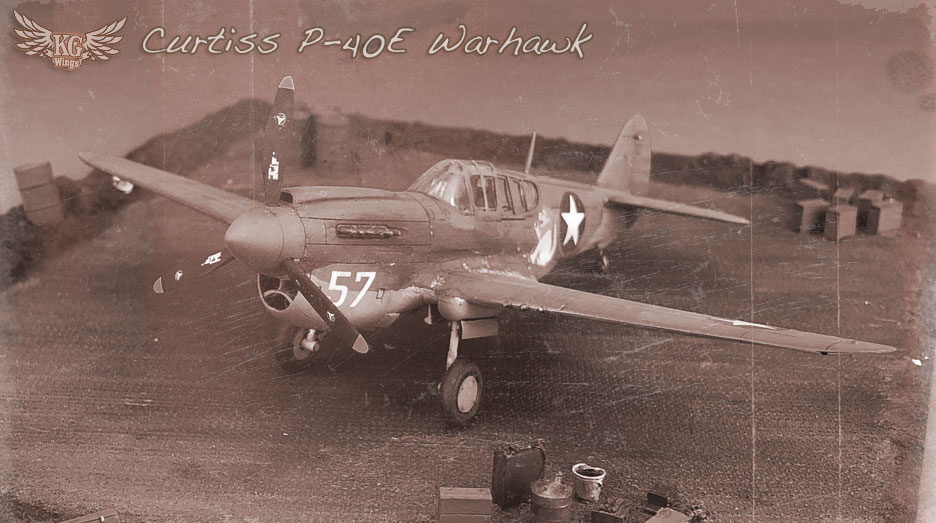 |
| The Curtiss P-40 Warhawk was an American all-metal fighter and ground-attack aircraft that first flew in 1938. It served in many Allied air forces in World War II, and remained in frontline service until the end of the war. It was the third most-produced American fighter during World War II, after the P-51 and P-47, with 13,738 completed when production ended in 1944. |
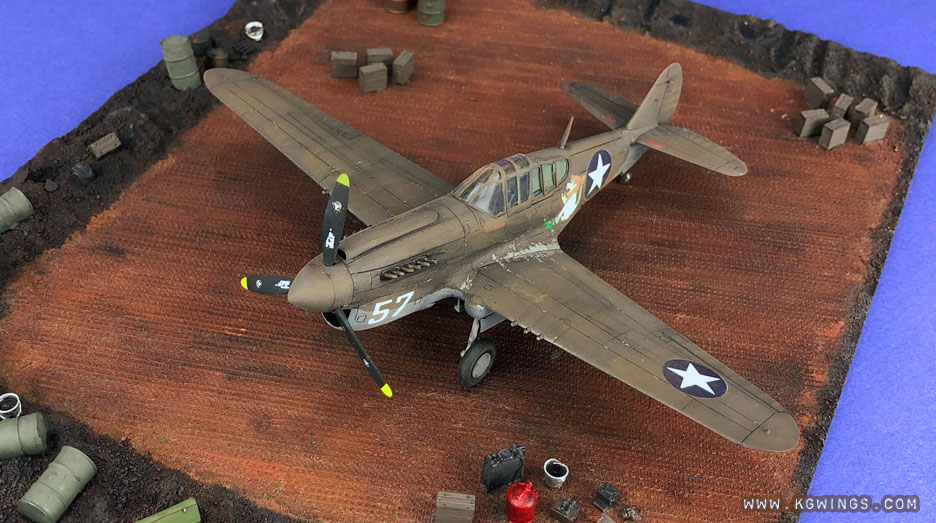 |
| In order to reduce development time and get the aircraft into operational service as quickly as possible, the P-40 was modified from the existing Curtiss P-36 Hawk. It was durable and relatively cheap to build so it remained in production long after it was obsolete as a fighter in the European theater. |
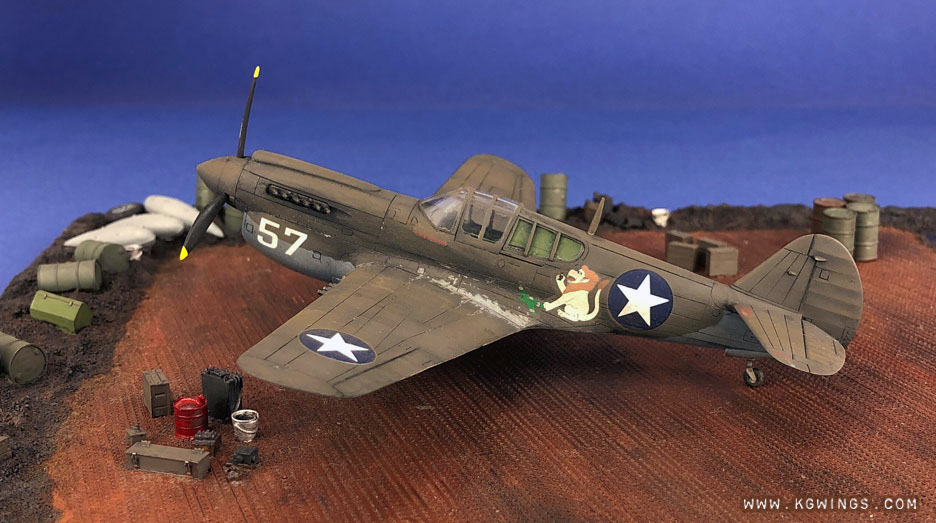 |
| The Warhawk was not equipped for high-altitude combat so it wasn't suitable for fighting Luftwaffe aircraft, but in North Africa, Southwest Pacific and China it performed well as an air superiority fighter, bomber escort and fighter-bomber. Over 200 Allied fighter pilots (US, UK, Australia, New Zealand, Canada, South Africa, and the Soviet Union) became aces flying the P-40. |
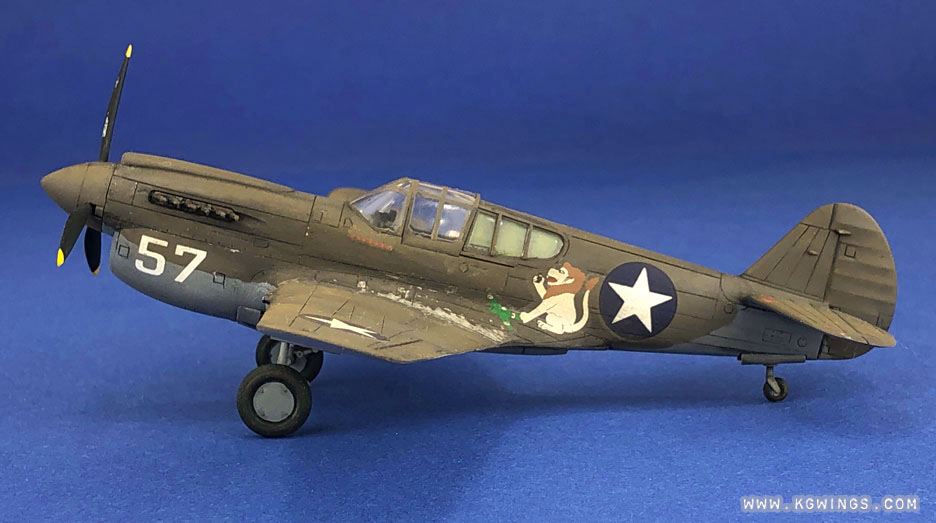 |
The P-40E was armed with 6 x .5 inch (12.7 mm) guns in the wings. The distinctive large chin airscoop was needed to cool the upgraded Allison engine. |
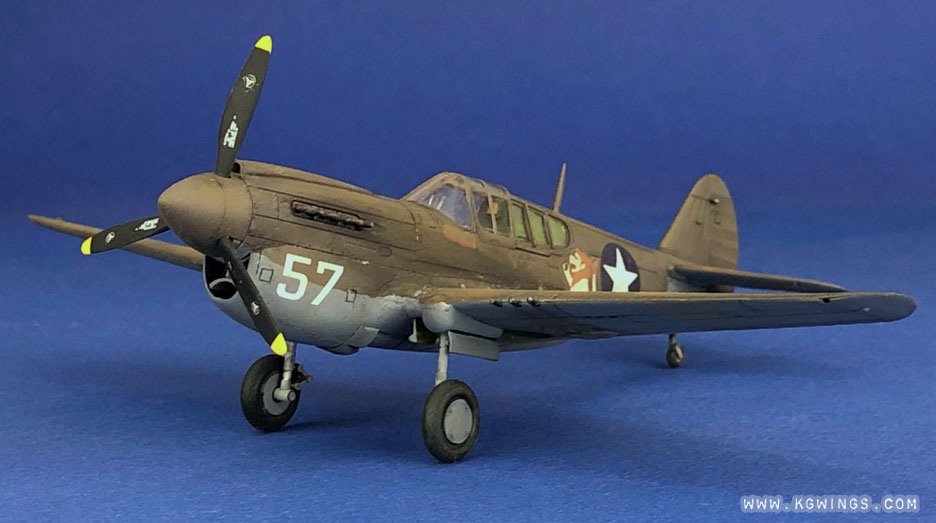 |
| This is a simple kit, easy to build and with enough detail to look nice when completed. |
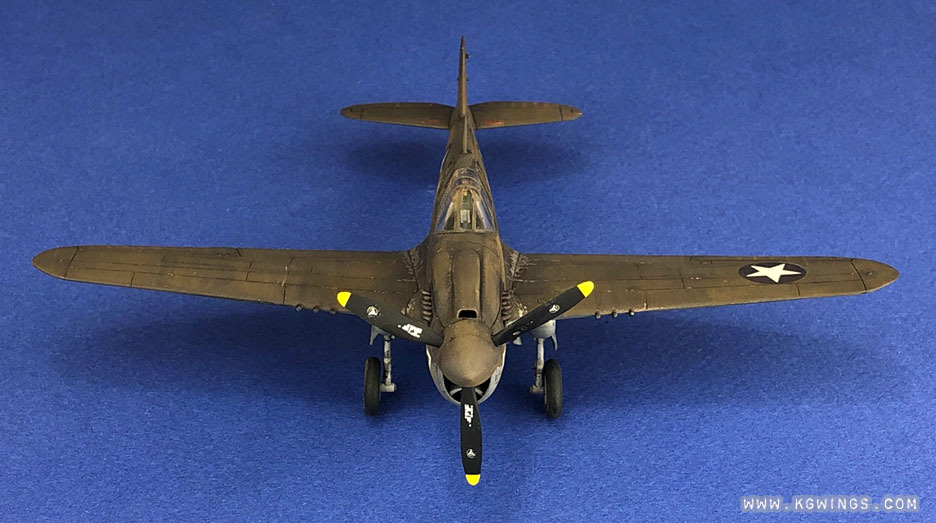 |
| Lining up wings and struts is usually a fight, but this kit didn't fuss at all, everything went right into place. |
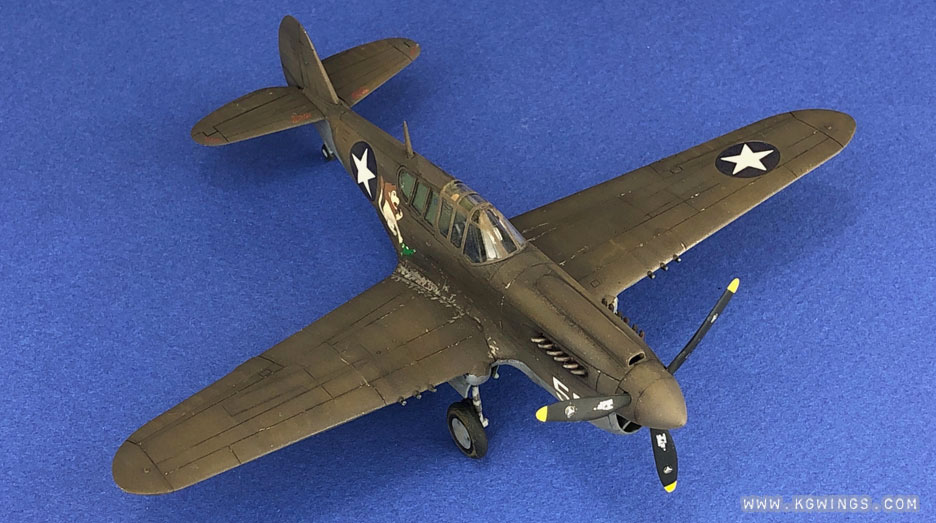 |
| Panel line and rivet detail is very nicely done on this kit, and parts fit together very well. A bit of filler was used to fill in the upper wing roots, liquid glue was enough to cover everything else. |
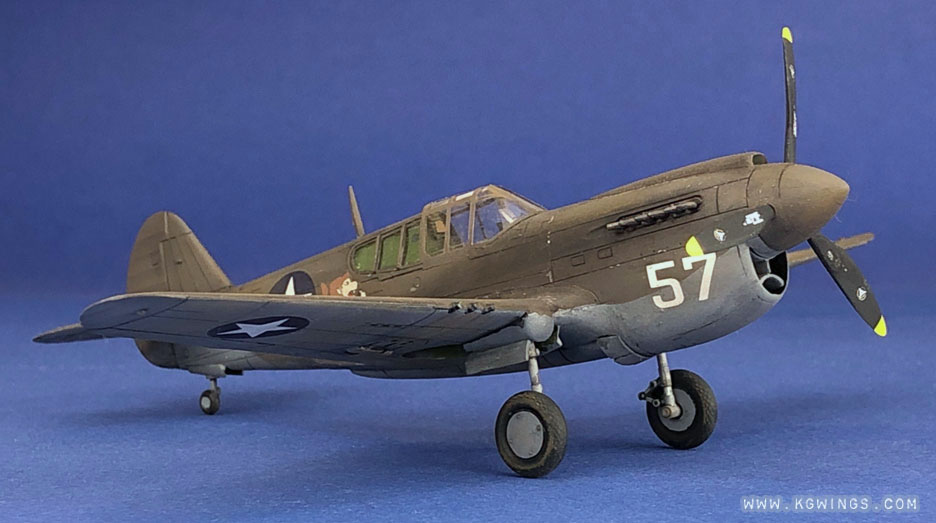 |
| I used pastel chaulk to create the exhaust stains and I'm not entirely happy with how it turned out. I think next time I'll spray a thin transparent smoke color. |
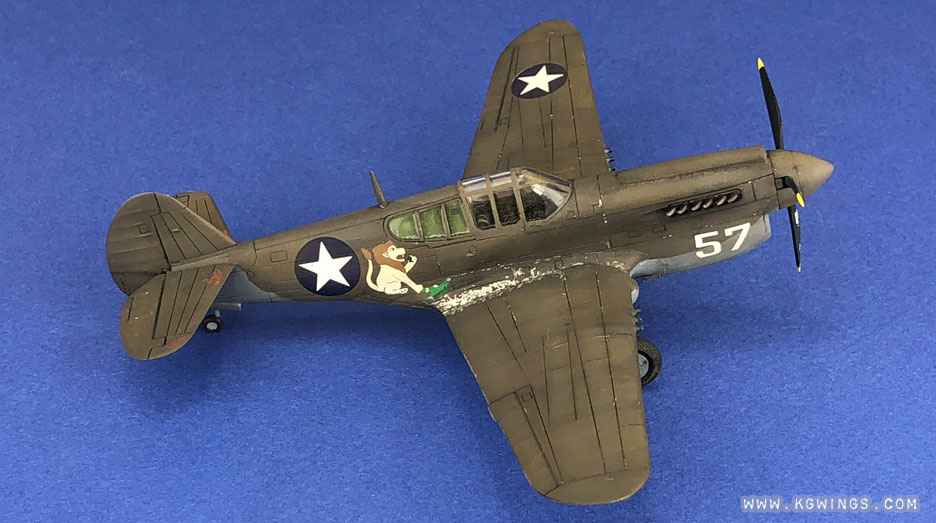 |
| The canopy is very clear but thick enough to distort any view of the cockpit, a vacform canopy would be really nice on this model. |
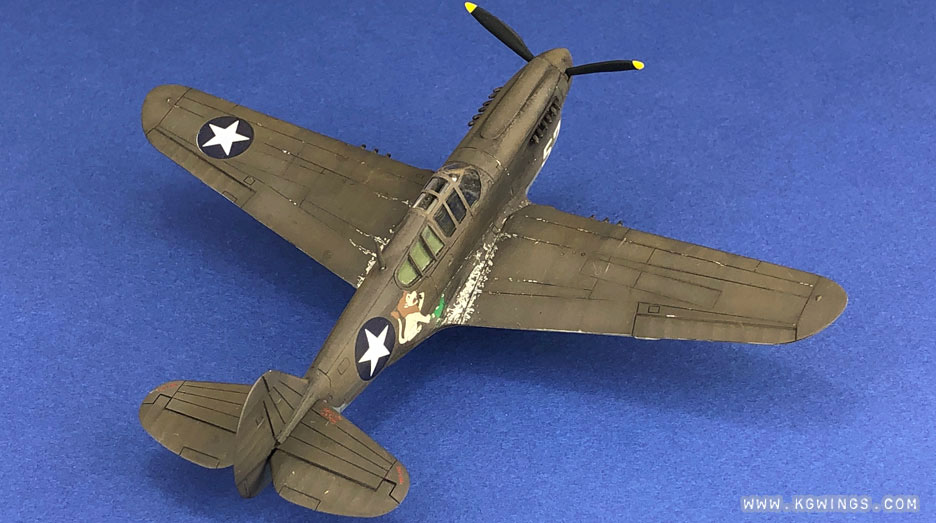 |
I haven't built a WWII fighter in over a decade so this was a nice change of pace. It inspired me to finish up the Mustang, Hurricane and Typhoon I started years ago, no idea why I stalled on them. |
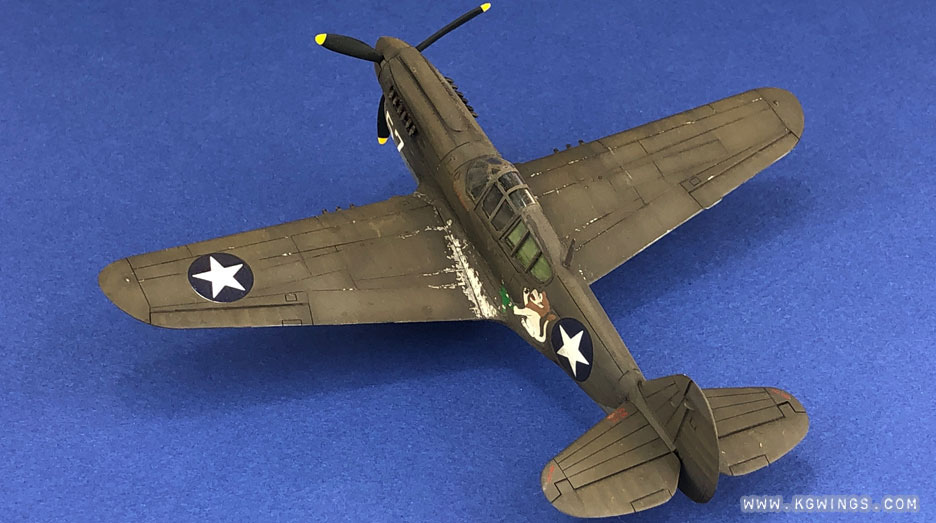 |
| I haven't built a WWII fighter in over a decade so this was a nice change of pace. It inspired me to finish up the Mustang, Hurricane and Typhoon I started years ago, no idea why I stalled on them. |
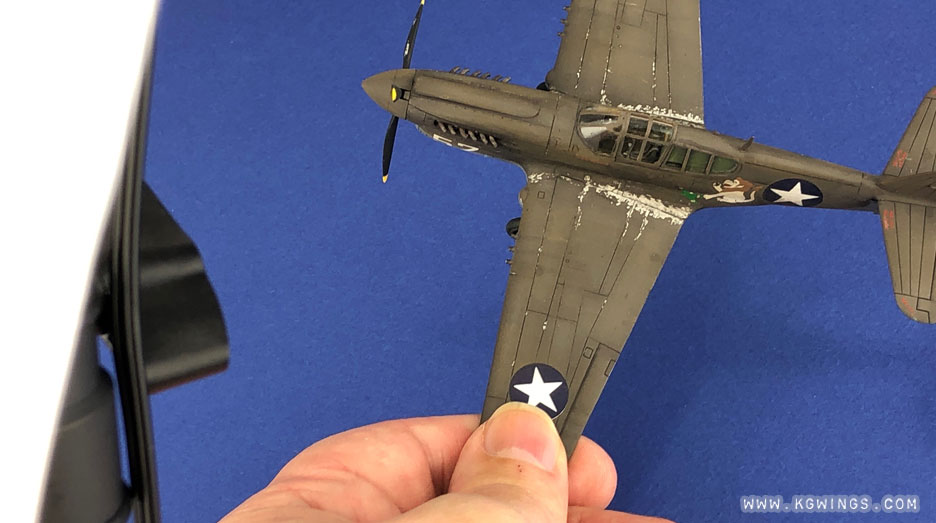 |
| I think I went a bit overboard on the paint chipping at the wing roots, I would dial it back a notch if I were to do it again. |
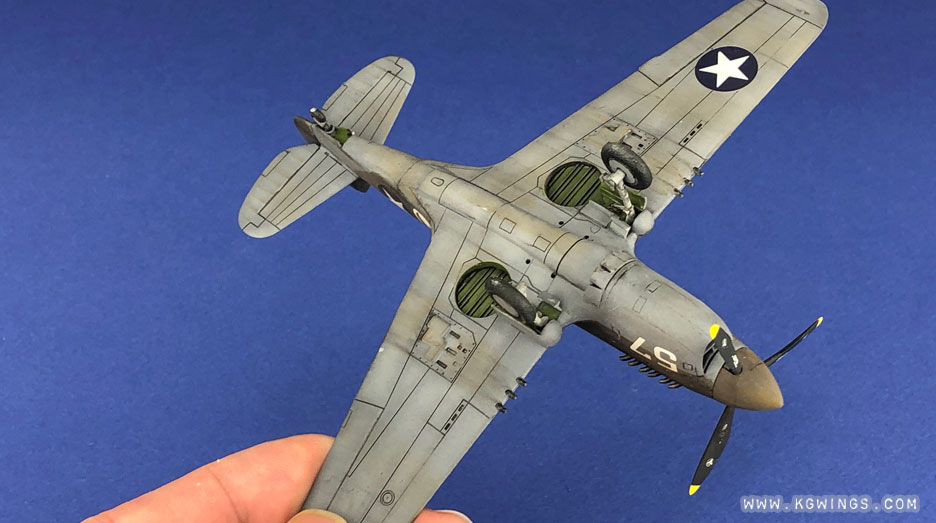 |
| The underside details of the kit are not bad, I'm just now noticing that I neglected to plug the holes for the external fuel tank which I decided not to attach. |
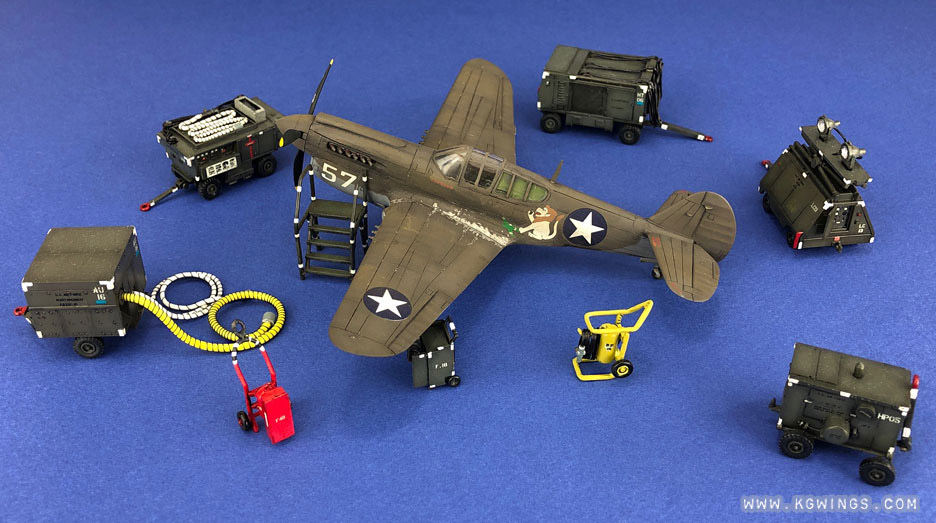 |
| I took this photo to mess with people and to entertain myself. Every modeler knows of course that this type of Aerospace Ground Equipment was painted yellow in 1942. Begin arguments now. |
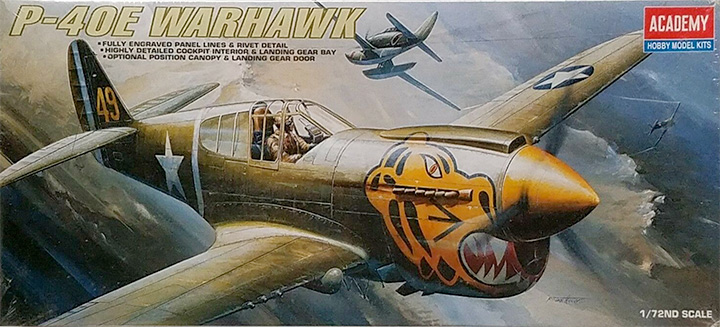 |

Kit: Academy #1671
Originally released 1999 |

Scale: 1/72 |
Value:
At the time of writing this kit ranges around 12.00(US) which is a bargain for just about any model anymore. |
The Kit:
Approximately 43 parts molded in light gray plastic.
Approximately 5 parts molded in transparent plastic.
Instruction sheet is black and white, 8 pages, with exploded view illustrations and painting/decaling indications.
Decals are provided to make:
USAAF P-40E, 11th FS/343rd FG, Aluetians, 1942
USAAF P-40E flown by First Lt. John D. Landers, 9th FS/49th FG, New Guinea, 1942
|
Assembly:
Assembly starts in the cockpit which includes a basic seat, foot pedals, control sticks and instrument panel, and side panel detail. The canopy is a bit thick and can only be assembled in the closed position so not much of the cockpit is visible once in place.
Fit is very good overall, hardly any filler was required on my kit.
External fuel
tank and bomb options are provided.
This was a very easy kit to assemble, no problems at all.
|
Aftermarket Decals:
SuperScale Decal # 72-675.
Decals to make 5 aircraft from the 49th FG (5th FS, 8th FS, 9th FS)
Decals are printed in register, opaque and on a nice thin carrier.
There are a few accuracy problems with this decal sheet, The real "Tarheel" aircraft had a dragon on one side which is missing on this sheet. The real "Dollye" aircraft had a nude pinup on both sides instead of the pegasus horse provided. The lion on "No. 57" which I modeled is much larger than it is supposed to be, it just barely fits on this kit.
|
Custom Modifications:
Seat harnesses made using masking tape.
|
Recommendation:
This kit is cheap, it's very easy to build and looks reasonably accurate at a glance. Any fan of WWII fighter aircraft should have a good time with this one.
|